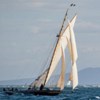I was never fond of the smell of petroleum products, but this rose to an intense dislike, when, in my job, they indicated their presence in places they definitely should not have been.
First you had to find the escape point, and ascertain how much had gone AWOL, Then engage with alls sorts of others, you really didn't want to deal with.
The emergency services, clients, councils, and your highers ups. Start the clean up, which could be a major, And somewhere in all this fix it, and return service.
And later participate in "The Investigation"
We had to be aware of where the Humber Princess actually was, when we shared her territory in 2015, as she shuttled backwards and forwards delivering lube base oil from port storage in Hull up to the blending plant in Rotheham. In that time she made two return trips.
Was impressed the way she delivered her, far from young, deckhand, from off the fore deck, onto the lock wing wall at Eastward Lock to set the lock where she entered, prior to the CART team arriving to take over.
Certainly would not have wanted to encounter her on the bends on the river near the Conisbrough Viaduct.





